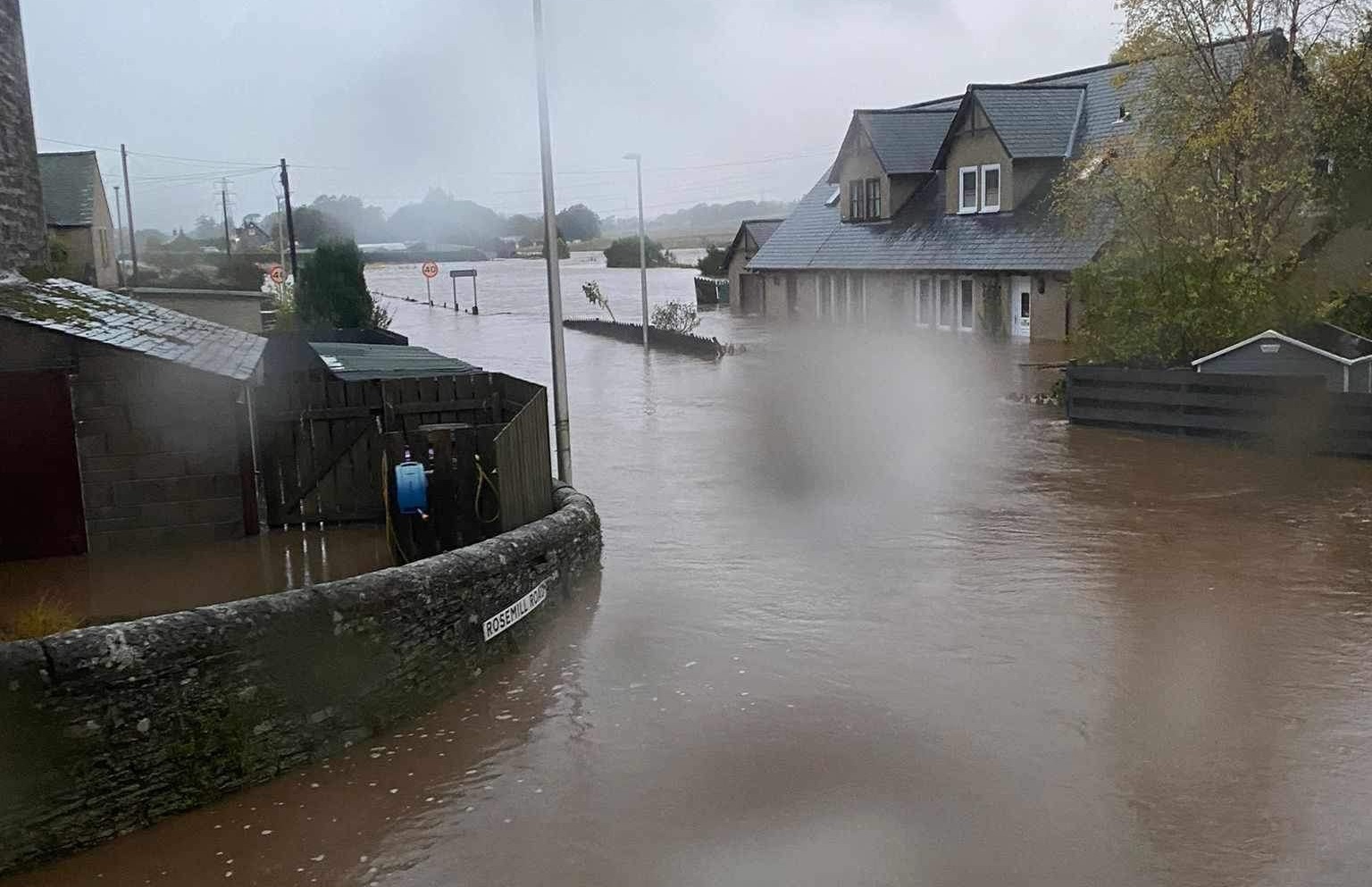Local views sought to protect Brechin from future storms

Angus Council is looking for those within the Brechin community most affected by Storm Babet to be at the heart of the challenging decision-making process about the area when it comes to its recovery and regeneration, housing decisions and future flood prevention.
At their meeting on Thursday 7 November, elected members will be asked to note the response and recovery activities that have been carried out so far.
They will also receive an update in relation to two independent specialist technical reports that will help to inform the work that is now required to identify the best options and solutions in relation to the future of housing and flood protection in Brechin.
How this work will be progressed will be the subject of a further report to the Communities Committee on 26 November. Importantly, it will also set out the council’s approach to community engagement and consultation on the potential options that lie ahead for the longer-term recovery of the River Street area and wider locality.
The two technical reports separately detail potential options for the future of the affected council housing stock in the River Street area and the existing flood protection scheme at the River South Esk and what options there are to enhance that protection.
While these studies have been carried out independently of one another, they are intrinsically linked. Extensive work is still required to establish how viable their recommendations are and how certain options might be progressed, and community engagement will form a vital part of that process.
Council leader Bill Duff said: “The clear aim has been to explore all options that may be possible before identifying what is actually achievable, affordable and of the best benefit to the local community.
“That is why it is essential that we engage with the local community on what their preferences would be. We have heard a wide range of views, thoughts and feelings through the contact we have had with the community during the year since Storm Babet. But, as the options and possible solutions come into sharper focus, we want the community to be fully informed, for them to express what matters to them and for their voices to be heard.
“There is no easy solution that will allow the flood recovery to meet the aims and aspirations of every single person. But an inclusive and lively engagement process with stakeholder groups and as many individuals as possible will undoubtedly help us all to reach outcomes that are best for our local community.”
Brechin councillor Chris Beattie added: “We have spoken with residents who are fearful at the thought of moving back to River Street after the flooding and others who still live there and who feel isolated and frightened. The impact of Storm Babet cannot be underestimated - a community has been lost there.
“We must look at the options that are of most benefit to the community and affordable to us and ensure that any decisions on the future of the area are guided by an informed community. We want to hear from tenants, home and business owners and we especially want to engage with young people as, after all, the decisions we take now will shape Brechin for years to come. Community engagement is key.”
If approved by elected members, it is intended to fully publish the technical reports at the same time as the report to the vouncil in support of the community engagement.
Elected members will hear an update on the recovery work that has taken place since Storm Babet, when a record-breaking 150-200mm of rain fell in the wettest parts of Angus, especially Brechin between 18 and 21 October 2023.
A total of 189 residential, comprising houses, flats, and caravans (either owner-occupied, council or housing association-owned, or privately rented) suffered significant flood damage.
A flood protection scheme that became operational in Brechin in 2016 to guard against raised river levels of up to 3.7 metres (which experts then described as a 1 in 200-year event) was overwhelmed by river levels that rose to a historic 4.6 metres.
To give further context, defences that were designed to cope with a flow rate of 335 cubic metres of water per second encountered a river flow rate during Storm Babet that has been modelled at an unprecedented 434 cubic metres of water per second. One cubic metre per second equals 1000 litres, or approximately one metric tonne of water, per second.
While Brechin was a focus of activity due to the extreme flooding, other areas of Angus were also badly affected including but not exclusively, Tannadice, Finavon, Monifieth and Montrose.
It should also be noted that Storm Babet was the first of nine storms of the 2023-24 season and further damage was experienced in Angus because of storms Ciaran, Gerrit, Isha and Jocelyn, placing further demands on council and other services.
Angus Council chief executive, Kathryn Lindsay said: “Along with our partners, we have provided a wide range of support and information to residents and businesses affected by the immediate and ongoing impacts of Storm Babet, which was unprecedented in its scale and impact.
“Angus Council has distributed all funding received from the Scottish Government and has allocated council funds, workforce, and resources into efforts to assist businesses and residents.
“We are grateful for the continued efforts of the community, and we understand that people want to continue to have as much information as possible about what did happen and the actions that can be taken to protect against future severe weather events.
“These two studies by independent experts will underpin detailed engagement with the community and the development of recommendations and long-term options for the area’s housing and for protection against future flood events.
“It is a complex process, and we want to make sure that people are aware of the detail of these reports and have opportunities to influence the development of recommendations for action.
“We will continue to keep our citizens updated on this process and I would encourage them to get involved and have their say.”








